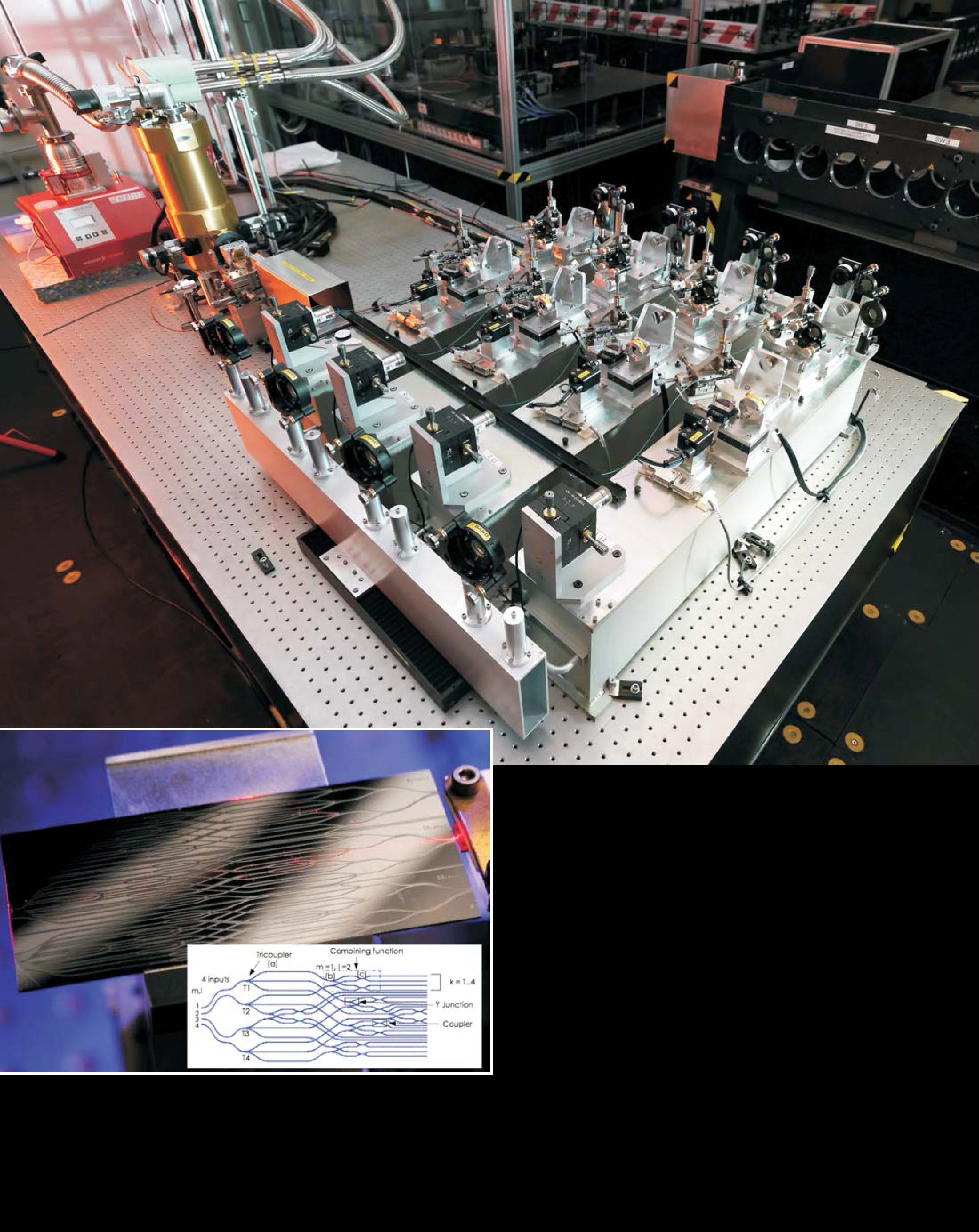A PIONIERing interferometer
DOI: 10.1063/1.3528994
In a grand display of astrophotonics, the light from four telescopes at the Very Large Telescope Interferometer (VLTI) in Chile was combined in late October for the first time, by the Precision Integrated-Optics Near-infrared Imaging ExpeRiment (PIONIER). The visiting instrument, developed at the Laboratoire d’Astrophysique de Grenoble (LAOG) in France, complements the two existing VLTI instruments that combine light from two and three telescopes.
Before even reaching PIONIER, the light paths from the four 1.8-meter auxiliary telescopes at the VLTI had to be controlled to less than a micron. Each of PIONIER’s four alignment units, seen above in the foreground, focuses one of the incoming VLTI beams into an optical fiber. The fibers channel the light into the heart of the instrument: an integrated optics beam combiner, developed at LETI, a French Atomic Energy Commission laboratory, in collaboration with LAOG. Housed under the folded metal cover to the left of the alignment units, the combiner, smaller than a credit card, interferes each beam with all the others (see the inset). The 24 combiner outputs are then focused onto a detector in the brass cryostat.

(Photo courtesy of Bernard Lazareff/LAOG/OSUG/UJF/CNRS and the European Southern Observatory; inset courtesy of LAOG/UJF and CEA/LETI, photo © CNRS Photothèque/Emmanuel Perrin.)

The interference output of PIONIER will have the resolving power of a virtual telescope some 100 meters across. The first images are anticipated in early 2011. Among the topics that PIONIER will study are protoplanetary and debris disks, hot Jupiters, and stellar surfaces.
To submit candidate images for Back Scatter, visit http://contact.physicstoday.org




